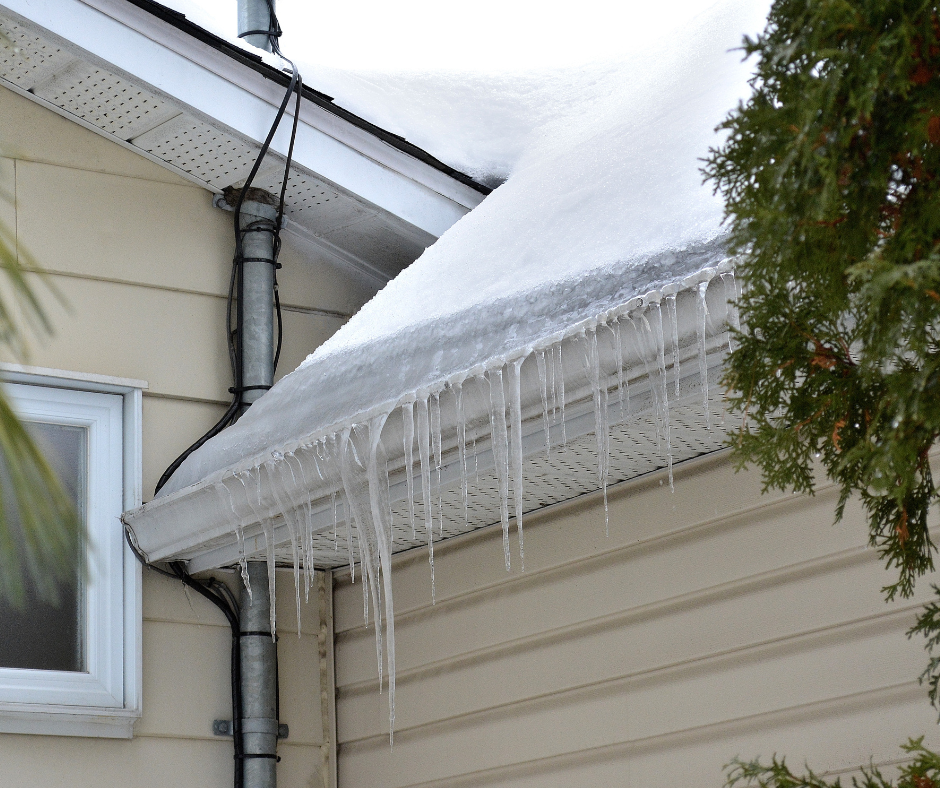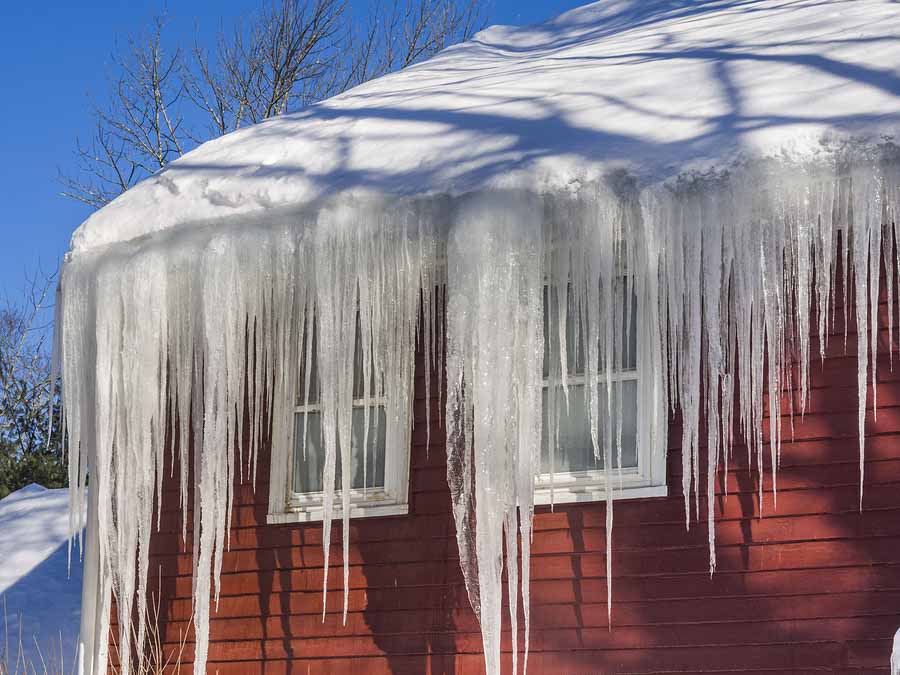Construction Chat: Navigating a Bad Ice Dam Year

The up-and-down temperatures, rare January rain storms, and the record-breaking snow totals we’ve experienced so far this brutal winter have been the perfect recipe for ice dam formation on various types of roofs. Ice dams are particularly tricky for Associations because the line between Homeowner vs. Association responsibility can become rather blurred. First, it is important to understand how ice dams form. In short, they form when the snow melts on your roof and then re-freezes over the eave—typically over the soffit area. The ice “dam” then prohibits further melting snow to drain properly off the roof, which can (but not always) cause leaking water into the home. There are many factors as to why ice dams form. The inevitable freeze/thaw cycle; excess snow pack; clogged gutters, or frozen downspouts; – but the primary culprit is excessive heat loss from the unit and/or a lack of ventilation. This is why, many times and depending on your Governing Documents, ice dams and the leakage they can cause is not necessarily the Association’s responsibility. They are NOT caused by roofing deficiencies. They are caused by insulation and ventilation deficiencies INSIDE of the home. It is important to understand how your Association’s Governing Documents define “unit boundaries.” Does the boundary of the unit include “unfinished surfaces” or “no upper or lower boundaries?” If so, this could imply that the attic space (or the space between the roof deck and the ceiling) and insulation inside of it would be a homeowner’s responsibility; therefore, the heat loss causing the ice dam is the homeowner’s deal. Once there is an understanding of who is responsible for what, it is very helpful for the associations to review their ice dam situation and have a policy in place for how they are to be addressed. It is also important to have an awareness of the history of ice dams and potential leakage. Sometimes the worst-looking ice dam you’ve ever seen will not cause any leakage (suggesting roofs have extra layers of “ice and water shield” membrane under the shingles). And sometimes, where you might not be able to see an ice dam at all, a unit has a faucet coming into their unit at the exterior wall line. Knowing if your Association has a history of LEAKING ice dams is important to know as you make a decision on how (or IF) the Association addresses them.
Ice Dams – It ‘Tis the Season

Let’s face it, ice dams and Minnesota winters go hand-in-hand. An ice dam is a ridge of ice that forms on a roof, typically along the gutter line. This ridge of ice blocks melting snow (i.e. water) from draining off the roof and then that water refreezes. So what causes ice dams? Can they be prevented? What can we do once they form? Here are some ice dam basics: Ice dams are the result of temperature variances on roof. Temperature variances may be due to a lack of ventilation, insufficient insulation, or simply radiant heat from the sun (even on a below freezing day, the sun can warm the roof enough to create temperature differences). When ventilation or insulation are lacking, the attic space below the roof warms up. The warm air in the attic then transfers heat to the roof, warming it above the outside temperature. Similarly, solar heat gain may also cause temperature differences at the roof. When the roof warms, snow begins to melt. As the water from the melted snow moves down the roof, it eventually hits a colder section (or the outside temperature drops) and the water refreezes causing the ridge of ice mentioned above. This cycle repeats day after day and the ice dam eventually increases in size and weight. If not treated correctly, this ice dam may cause roof or gutter damage, or force the water into the home causing internal water damage. Opinions vary on the ability to completely prevent ice dams in our climate. Even with sufficient insulation and ventilation, radiant heat from the sun or the design of a roof may still allow ice dams to form. The first step in ice dam prevention is to ensure the attic space is properly ventilated and insulated. It also a good idea to seal any locations where air leaks from the living space into the attic. Local energy providers often provide energy audits of properties and can help identify any air leakage, ventilation or insulation issues. As a note, mechanical air ventilation is not recommended because it can cause other moisture and pressure issues within the home. Natural ventilation practices are recommended. In addition, gutters and downspouts should be clear of leafs and debris. This may not prevent ice dams, but will allow melted ice that reaches the gutter to drain away from the roof. Another prevention method is to remove snow from the roof. However, this can be dangerous and may cause roof damage, so hiring a professional is recommended. Your manager has access to these professionals. We do not recommend the board, manager or homeowner conduct snow removal! If ice dams do form, removal may be necessary to avoid damage to the roof or unit interior. The best removal method is to have a professional remove the snow and steam the ice dams. This will temporarily solve the issue, but the prevention methods above should also be addressed to prevent future ice dams. The use of picks or other sharp tools is not recommended as it may damage the roof. In addition, the use of sidewalk salt (often seen as a sock filled with salt) should not be used on a roof as it may damage and discolor the shingles, and may void the warranty. Heat cables can be helpful; however they require installation prior to the ice dam formation, are visible year round, and will increase energy usage. In general, when addressing ice dams, prevention is the best route. There may be some upfront costs, but the benefits outweigh the cost when considering roof, gutter and interior damage. When ice dams do form, consult your manager and we will guide you on the best way to address them and then help prevent future issues.
